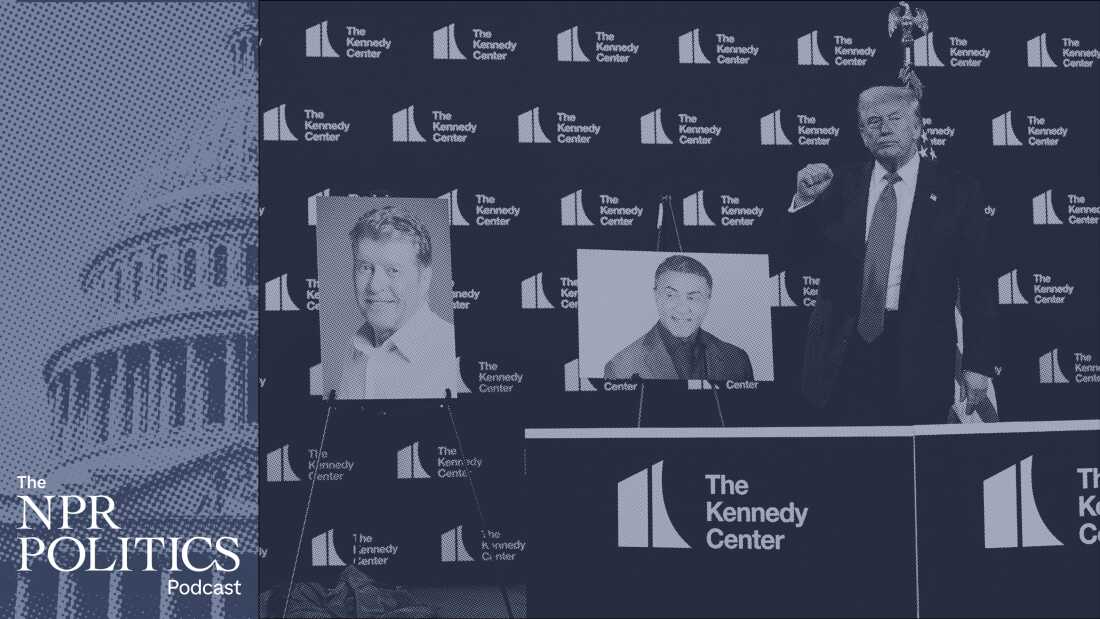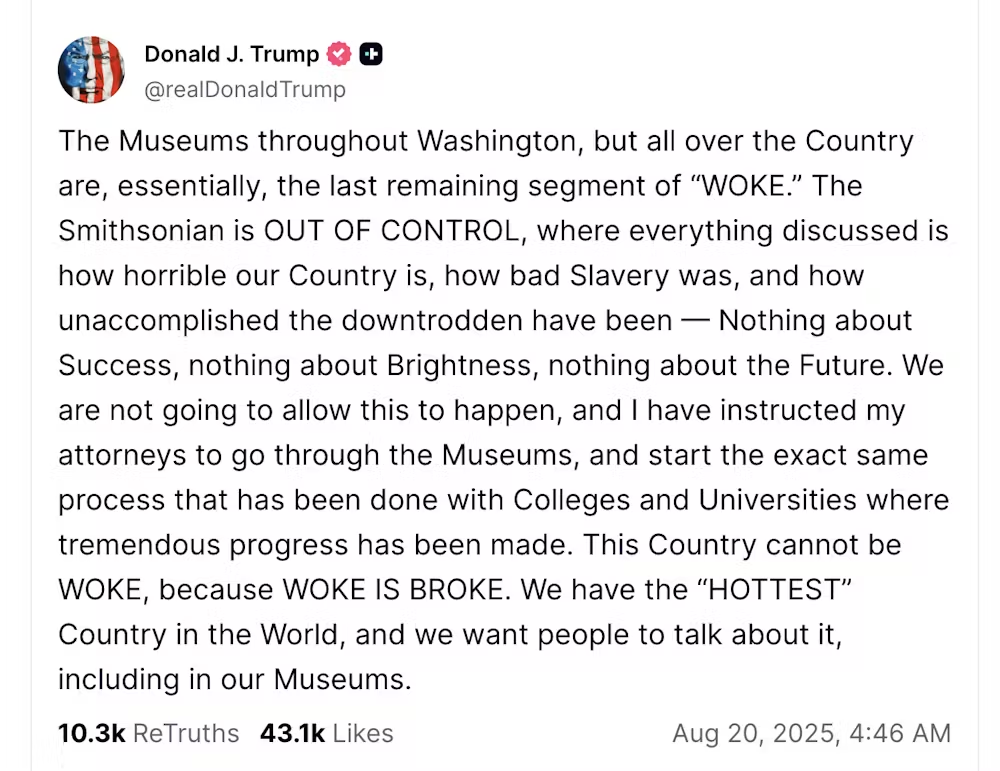Beyond seeking authoritarian control, it’s about replacing expertise with loyalty and getting back at high brow spaces which always disdained him

What exactly is going on with Donald Trump’s attempts to intimidate, influence and ultimately take over cultural institutions?
On the surface, it seems obvious: He wants control of these outlets, in the same way he’s tried to control everything from storied journalism outlets like CBS News to venerated academic institutions like Columbia and Harvard universities.
That’s certainly what’s happened in the case of the Kennedy Center, where President Trump dismissed all the board members appointed by Joe Biden and installed people loyal to him. Because Biden had not fired the board members Trump appointed in his first term, the group was dominated by loyalists who then installed him as board chair, turning a group with a history of bipartisan focus on the arts into an overtly political megaphone for the current President.
His administration has also announced a comprehensive internal review of eight Smithsonian museums to “celebrate American exceptionalism, remove divisive or partisan narratives, and restore confidence in our shared cultural institutions.” In a social media post, the President said he’s targeting “the last remaining segment of WOKE,” noting “everything discussed is how horrible our Country is, how bad Slavery was, and how unaccomplished the downtrodden have been.”

And this intimidation has seemingly spread to entertainment media, where skeptics – including me — still question whether the timing of Paramount’s announcement that it was canceling Stephen Colbert’s The Late Show in May, was designed to curry favor with the administration and help earn approval for its merger with Skydance, which came a few weeks later.
But there seems to be a lot going on here beyond simply exerting control. And I really enjoyed digging into the issue Friday with one of best political reporters I know, Domenico Montenaro on the NPR Politics Podcast.
You can listen to our conversation here. And there’s a different, shorter conversation we had along the same lines for All Things Considered on Friday that you can listen to here.
For those who have been following the President’s actions closely, this likely won’t seem like news. But I do still think it is important to talk a bit about what else is going on here.

Beyond exerting literal control, Trump also dominates by spreading fear and uncertainty.
What is also notable about his efforts to control the arts is how little specificity there is to his demands, beyond general criticism of diversity values and an insistence on loyalty/fealty to him. What exactly will the museums be judged on? And who will be doing the judging? Trump says he was involved with selecting the roster of Kennedy Center honorees this time around, but why exactly was this group picked, and what did the potential honorees he excluded for being too woke actually do?
This vagueness about criteria coupled with a devastating punishment keeps people off balance, makes it tough for them to push back against criticism or figure how to work around what they are demanded to do. It also encourages his supporters to innovate their own ways of showing their loyalty by enacting what they think might be his will.

The values of expertise and ability are replaced by loyalty and fealty to Trump and his ideology.
Past presidents were mostly content to hire qualified experts – historians, curators, academics, artists, administrators – and let them decide what should go in a museum or get an honor from the Kennedy Center, using their professional judgment. Now, all of that takes a back seat to supporting Trump’s vision, regardless of how it jibes with actual history of facts.
Trump seems to crave recognition and honors from the institutions he is subverting.
In the same way he has insulted the New York Times while also agitating for it to cover him, or pleads for a Nobel Prize while criticizing the honor which went to Barack Obama, there is a sense that Trump enjoys forcing loyalty from cultural institutions which may have considered him unworthy of attention before he became president.
Even as Republican loyalists in Congress try to have the Kenney Center’s Opera House named after First Lady Melania Trump, the President plans to become the first president to host the honors ceremony, revealing he always wanted to get one, himself.
It’s a vibe war: Trump makes supporters feel good by erasing parts of American history where the country oppressed minority groups, especially Black people.
The biggest moral advantage civil rights advocates have had in recent decades is the general acknowledgement that America legally victimized and oppressed non-white people, especially Black people, for hundreds of years.
Trump is trying to erase that advantage by disappearing the history from museums and schools while selling the ridiculous idea that remembering that past is somehow unfair or an affront to the country.
It is, instead, a necessary element for a country built on the contributions of a great many disparate immigrants. To avoid repeating the limiting and horrific sins of the past, they must always be remembered in the present.
As all of this unwinds on multiple fronts, it is difficult for those who believe in the independence of museums, the importance of preserving accurate history, the necessity for artistic freedom and the value of expertise to mount effective pushback.
But it will be key to preserving the quality and effectiveness of American institutions to stay tethered to facts and the truth. Even when its a truth certain presidents have a tough time facing.